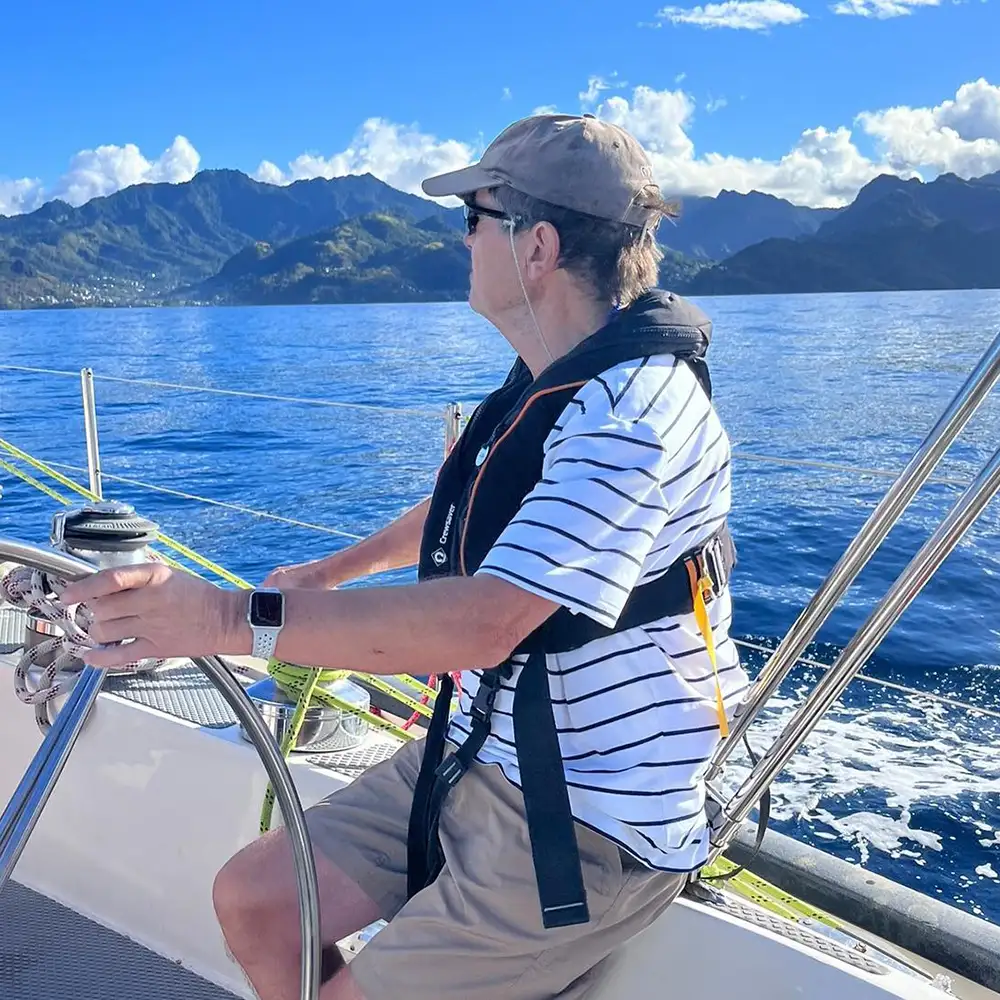This is a selection of some of the special places we can visit on this Atlantic crossing. As with any long-distance ocean passage, the actual route and itinerary will be dictated by the wind and weather at the time, so other than the start and end points, none of these can be guaranteed, but we’ll be aiming for them!
Key West, USA
Key West, the southernmost point in the continental United States, is a vibrant island city located in the Florida Keys archipelago. Known for its laid-back atmosphere, it features stunning sunsets, beautiful beaches, and crystal-clear waters ideal for snorkeling and diving. The city boasts historic sites like Ernest Hemingway’s Home and Museum, lively nightlife along Duval Street, and a rich cultural heritage influenced by its proximity to Cuba. Key West is famous for its unique blend of natural beauty, artistic flair, and a welcoming, eclectic community.
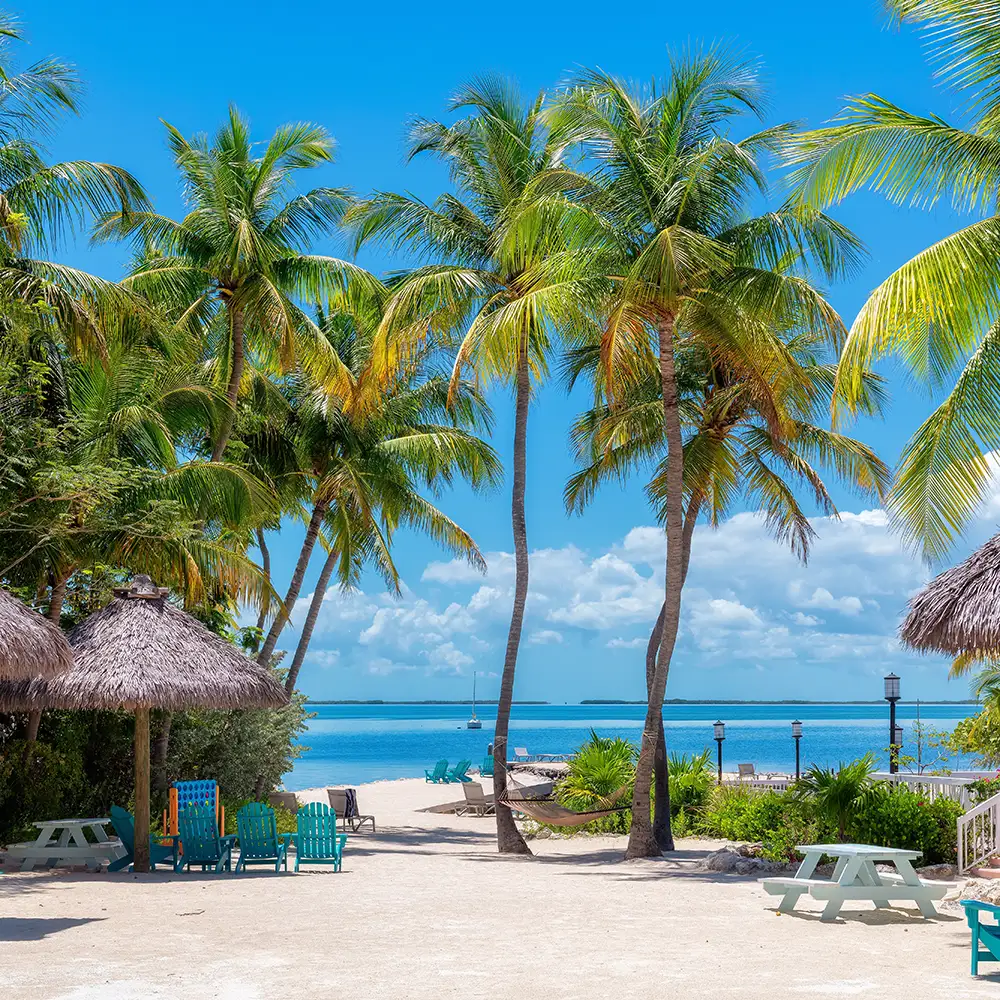
Bermuda
Bermuda’s stunning crystal caves are a natural wonder featuring dramatic stalactites and stalagmites reflected in crystal-clear underground lakes. There is a guided tour that offers great insight into the geological history and formation of these breathtaking caves.
Horseshoe Bay Beach is renowned for its pink sand and turquoise waters, and is one of Bermuda’s most picturesque spots. It’s ideal for swimming, snorkeling, and simply relaxing after our first long passage of the crossing. St. George’s Town is a UNESCO World Heritage Site, and gives a great glimpse into Bermuda’s colonial past. We can wander through its narrow streets, visit the historic St. Peter’s Church, and learn a bit more about the island’s history at the Bermuda National Trust Museum.
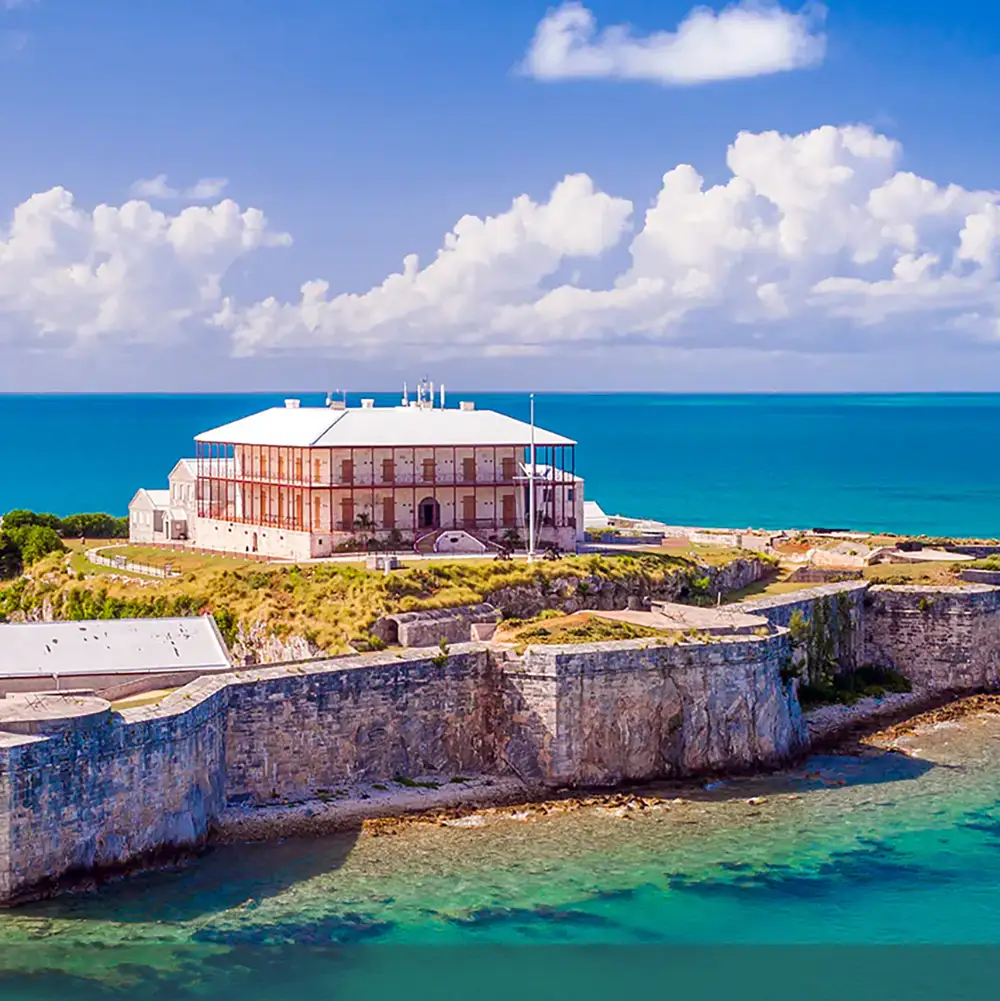
The Azores (Faial Island)
Our most likely stop in the Azores isHorta, the main town on Faial Island. It is renowned for its picturesque marina, an iconic stop for transatlantic sailors. The marina’s walls are adorned with colorful murals and paintings left by sailors from around the world, creating a great atmosphere. After a long passage, it is lovely to stroll along the waterfront, maybe visit the Horta Museum to learn about the island’s maritime history, and have some R&R.
Peter’s Café Sport: A legendary meeting spot for sailors and visitors alike, Peter’s Café Sport is a must-visit landmark in Horta. Established in 1918, this iconic bar is famous for its ambiance, nautical memorabilia from passing yachts, and its signature gin and tonics.
Capelinhos Volcano: If we have time, you may be able to explore the dramatic landscape of the Capelinhos Volcano, the site of a volcanic eruption that occurred between 1957 and 1958. The eruption created an otherworldly terrain of ash and lava, adding a new landmass to the island.
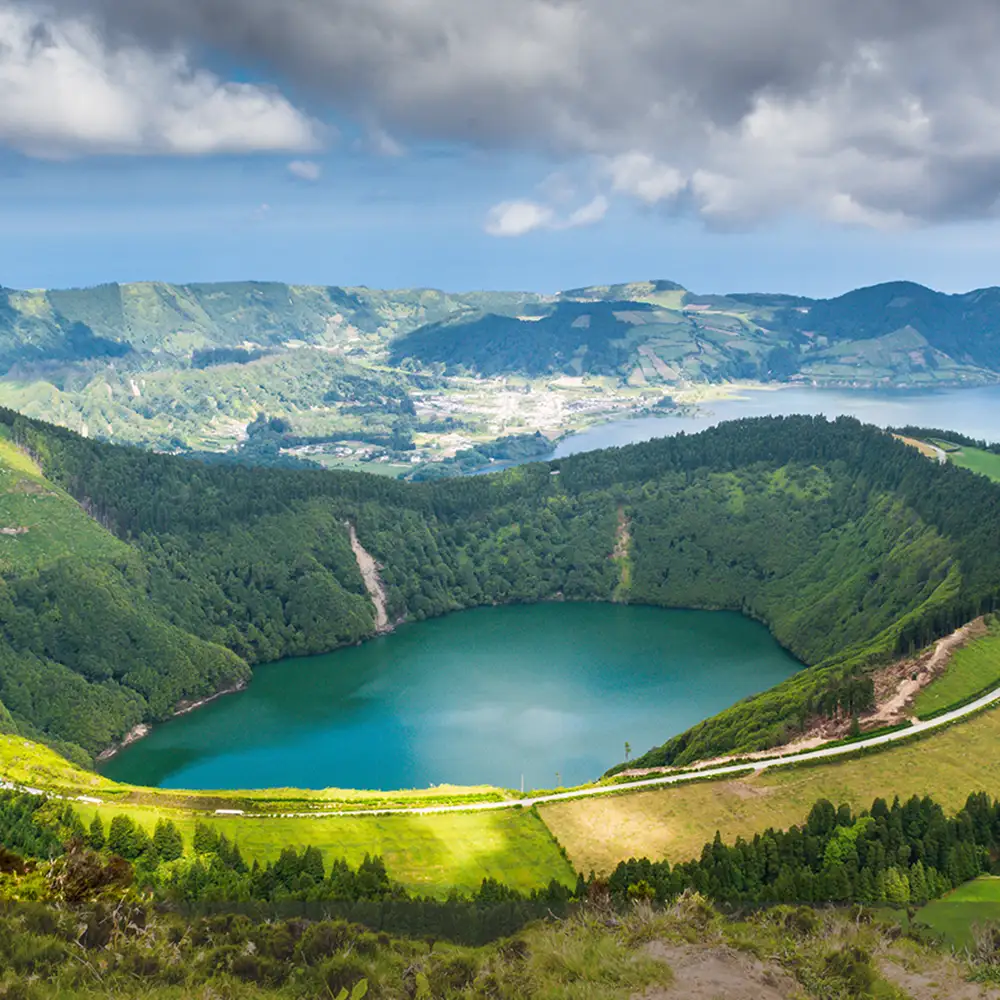
The Isle of Mull, Scotland
We will likely make landfall on the colorful capital of the Isle of Mull, Tobermory. It is famous for its brightly painted buildings along the waterfront. We can explore the charming streets, visit its famous malt whisky distillery, and likely enjoy fresh seafood after our sea rations! If we have time we could look to visit Duart Castle, perched on a cliff overlooking the Sound of Mull or have a hike up Ben More, the island’s highest peak, with stunning views from the top.
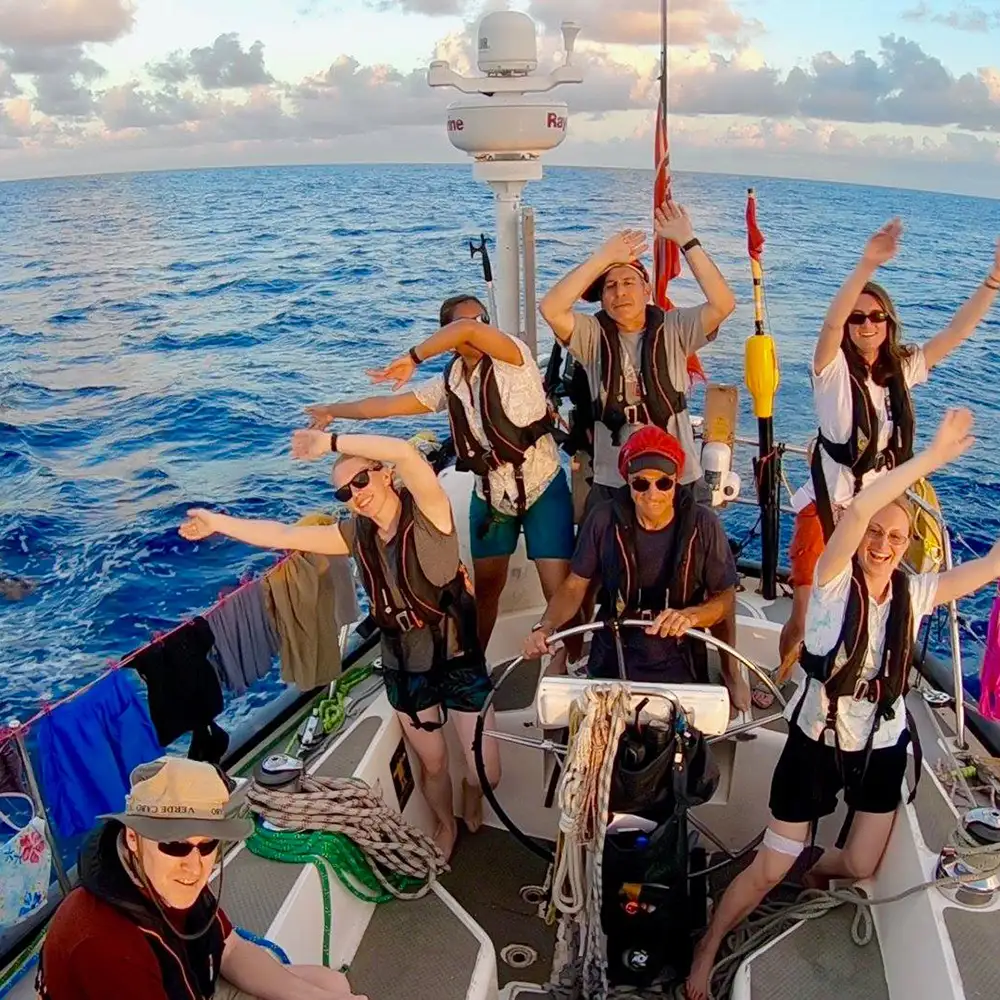
Pre departure activities
In the build up to departure, we take time to get out sailing and really work with the crew to build skills, develop as a team and answer as many questions as we can. It means that when we finally set sail for the big crossing, you are as prepared as possible.
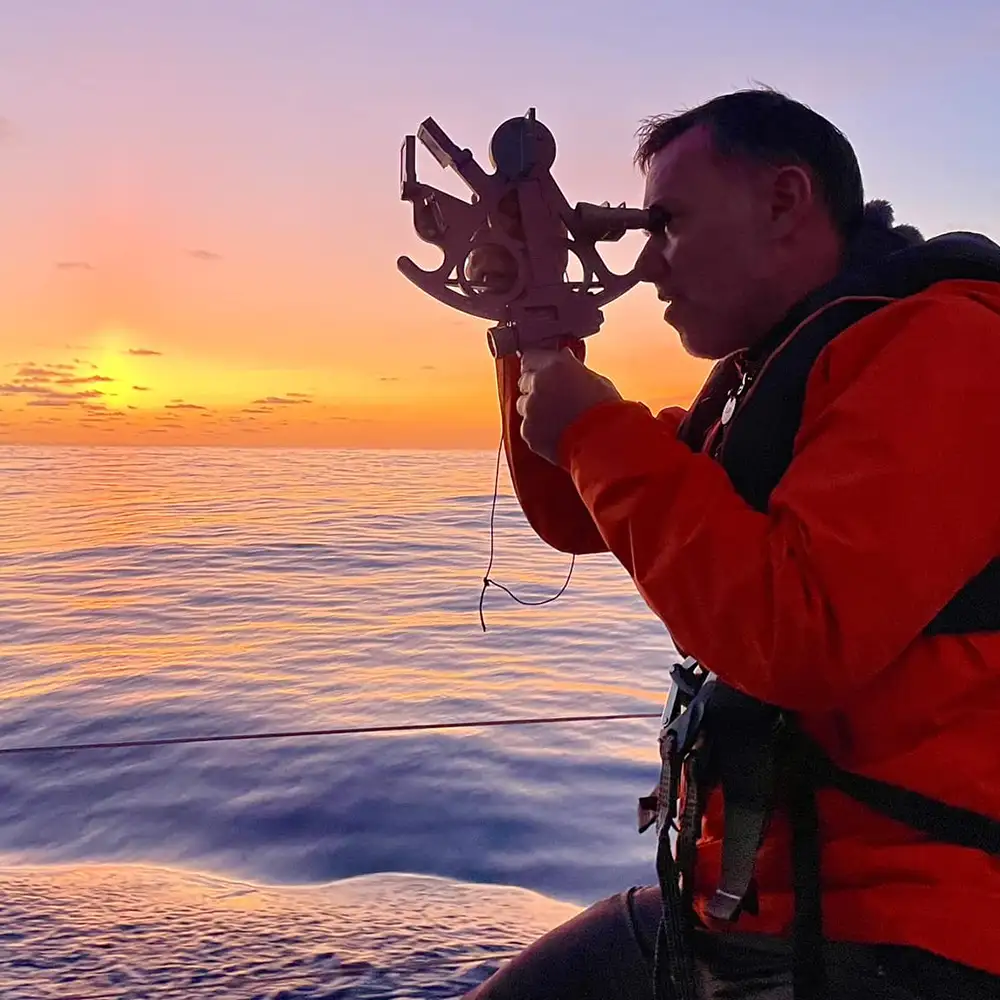
Daily Routine at Sea
Life at sea quickly settles into a routine governed by the elements and the necessities of sailing. Each day is structured around watches, navigation checks, sail adjustments, and some boat maintenance. You’ll have day watches and night watches, when you will see star scapes unlike any you have ever seen before. When you’re not on watch, you can rest, read, gaze out over the endless horizons and spectacular sunrises and sunsets and immerse yourself in the experience of being out in the middle of the Atlantic Ocean.
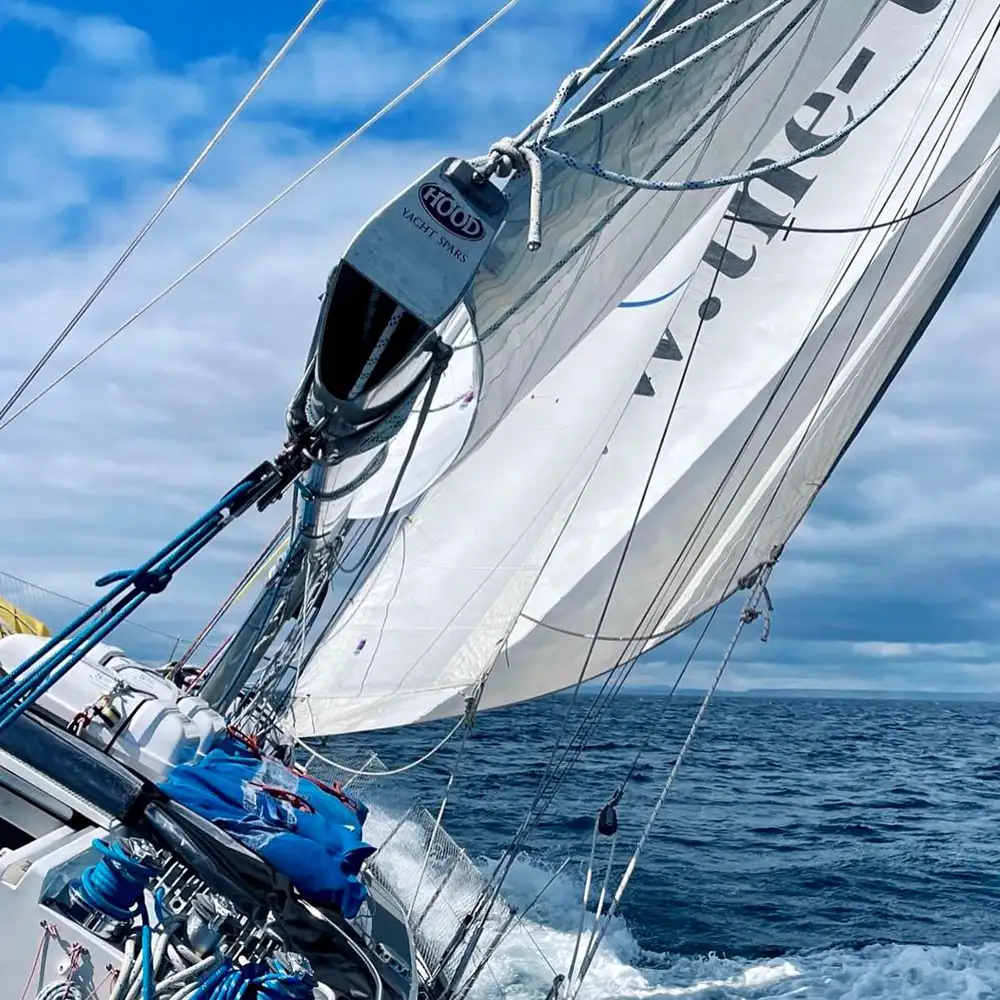
Helming and Navigation
Helming, or steering the boat, is a shared responsibility, with crew members taking turns to keep the yacht on course. Modern navigation aids complement traditional methods, ensuring the yacht remains on the best path across the Atlantic. GPS, chart plotters, and weather forecasting tools are used to make well informed decisions and it’s fun to get the sextant out and learn how to navigate just using the Sun and stars.
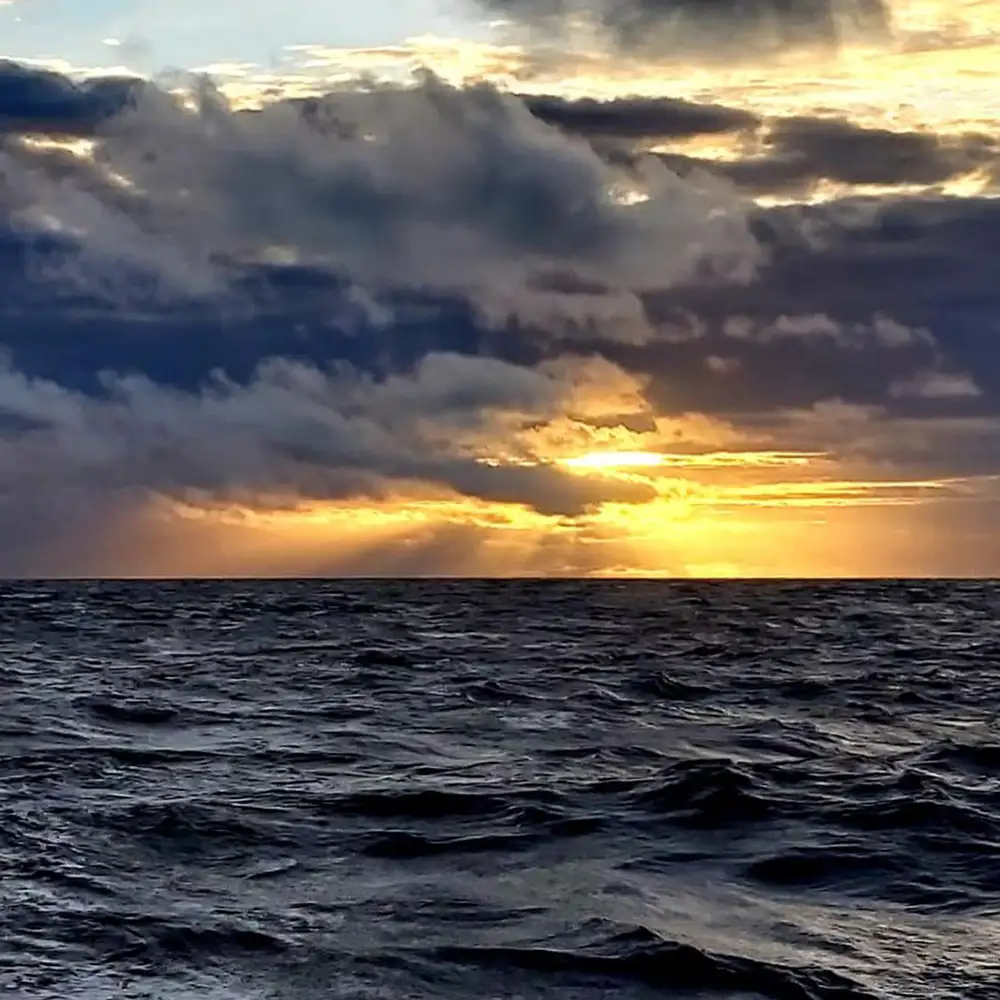
Trimming Sails and Keeping Watch
We need to keep moving as quickly and efficiently as we can, so trimming sails to suit the wind conditions is a constant task that requires attention and teamwork. Efficiency and speed depend on correctly setting the sails, a skill you will be honing with your ever-increasing experience and knowledge. Keeping watch always involves more than just watching for other vessels; it’s about monitoring weather changes and sea conditions and keeping us going fast and well.
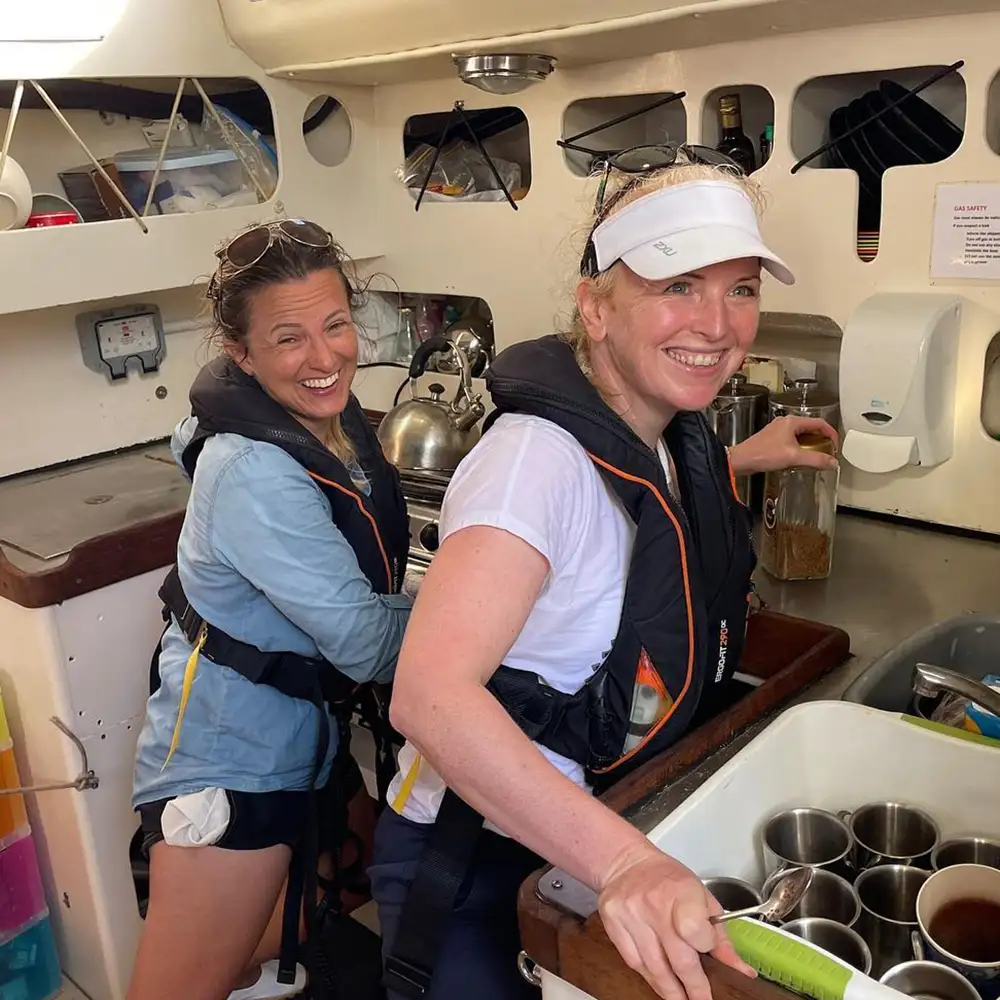
Cooking and Meals
Meals are always central events of the day, providing not just welcome food but a chance for all the crew to come together, chat and share experiences. Cooking at sea, in a confined and moving space, challenges crews to be creative with limited ingredients. It’s fun and becomes ever more fun to see what can be made with the remaining food.
Relaxing and Leisure
Despite the demands of sailing, there is plenty of time for relaxation and introspection. The vastness of the ocean offers a unique backdrop for reading, contemplation, or simply enjoying the solitude and beauty of the ocean. Watching dolphins play in the bow wave or marveling at the unobstructed view of the stars at night are experiences that stay with sailors long after the crossing is over.
